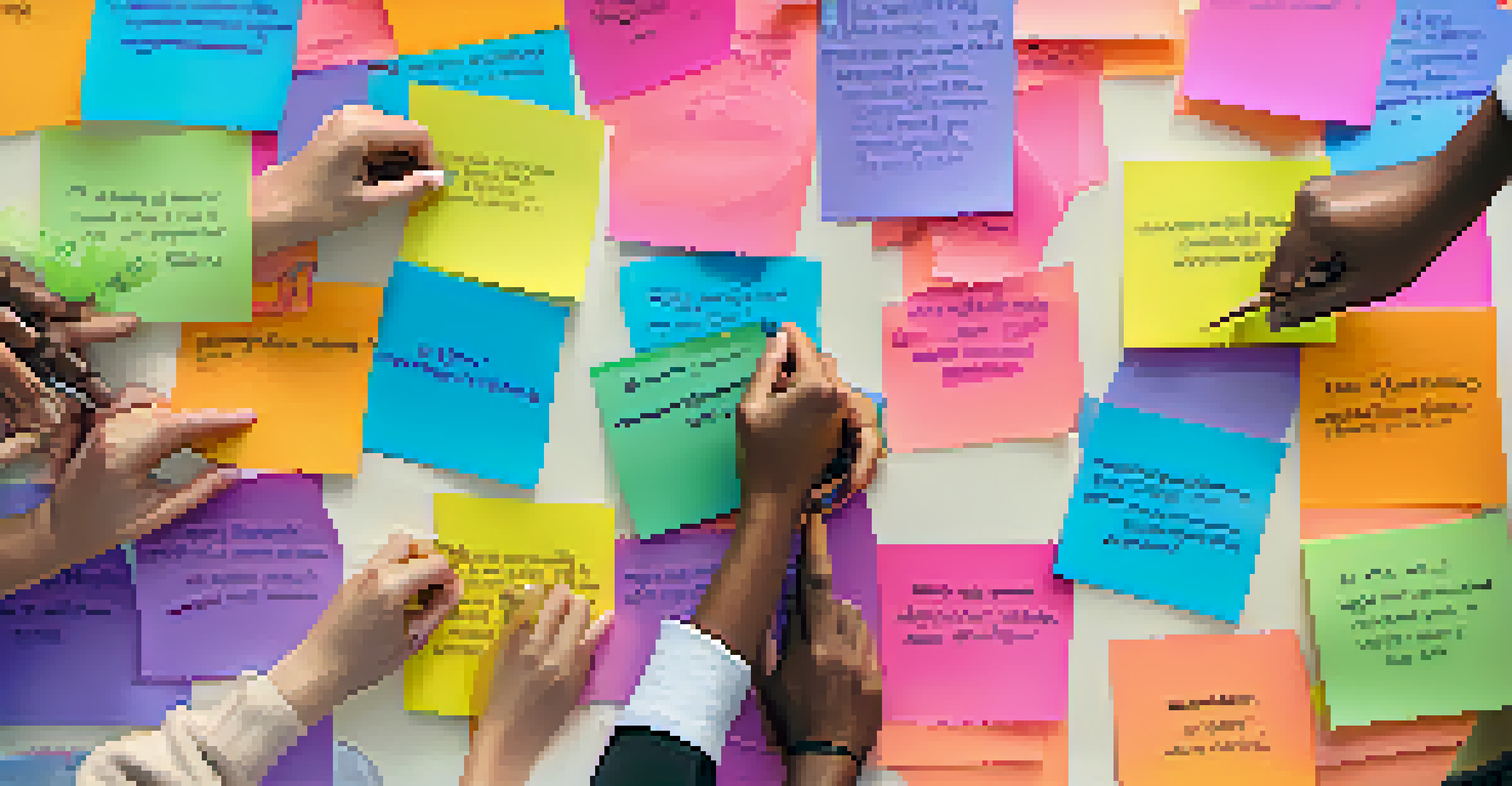Building Emotional Resilience Through Integration Circles

Understanding Emotional Resilience and Its Importance
Emotional resilience refers to our ability to adapt and bounce back from life's challenges. Think of it as a mental rubber band; the more we stretch it, the stronger it becomes. This resilience is crucial for navigating stress, adversity, and change without losing our sense of self.
Resilience is not about never falling, but about rising every time we fall.
Building emotional resilience helps us manage our emotions better, allowing us to respond to situations calmly and thoughtfully. It's not just about enduring tough times but also about thriving despite them. This quality can lead to improved relationships and greater overall well-being.
Incorporating practices that foster resilience into our lives can be transformative. One such practice is participating in integration circles, which provide a supportive environment for personal growth and emotional healing.
What Are Integration Circles and How Do They Work?
Integration circles are gatherings where individuals share experiences, feelings, and insights in a safe and nurturing space. Imagine a cozy campfire where everyone gets to share their stories without judgment. This format encourages vulnerability and connection, which are essential for emotional growth.

Typically, these circles involve structured sharing and active listening, allowing participants to express themselves fully. As members share their journeys, they not only gain insights but also foster a sense of community. This shared experience can help individuals feel less isolated in their struggles.
Emotional Resilience Defined
Emotional resilience is the ability to adapt and thrive amidst life's challenges, akin to a mental rubber band that strengthens with use.
Integration circles often include guided discussions, meditation, or reflective activities that deepen the emotional exploration. These practices help participants develop a greater understanding of themselves and their emotions, promoting resilience in the face of life's ups and downs.
The Role of Vulnerability in Emotional Resilience
Vulnerability is a key component of emotional resilience, as it allows us to express our true selves without fear of judgment. In integration circles, vulnerability is encouraged, creating an atmosphere where everyone feels safe to share their thoughts and feelings. This openness can lead to profound healing and understanding.
Vulnerability is the birthplace of innovation, creativity, and change.
When we share our struggles, we often discover that we are not alone in our experiences. This realization can be incredibly powerful and validating, fostering a sense of connectedness that enhances our resilience. Vulnerability helps to break down barriers, revealing our shared humanity.
Moreover, embracing vulnerability can lead to personal growth and empowerment. By confronting our fears and insecurities in a supportive environment, we learn to navigate our emotions more effectively and become more resilient individuals.
How Integration Circles Foster Community and Support
One of the most significant benefits of integration circles is the sense of community they create. Participants often form deep connections with others who share similar experiences and challenges. This camaraderie can provide a strong support network, which is vital for emotional well-being.
Feeling supported and understood can dramatically enhance our resilience. In integration circles, individuals often find encouragement and empathy, which can help them navigate their struggles more effectively. The relationships formed in these circles can extend beyond the meetings, providing lasting support.
Integration Circles Explained
Integration circles provide a supportive environment for individuals to share experiences and cultivate emotional growth through vulnerability and connection.
Additionally, being part of a community that values emotional expression can encourage us to prioritize our mental health. This supportive environment can inspire individuals to seek help and resources, further enhancing their emotional resilience.
Practical Techniques for Building Resilience in Circles
Integration circles often incorporate various techniques to help participants build emotional resilience. Activities like mindfulness exercises, journaling prompts, and guided meditations can facilitate deeper self-reflection and emotional processing. These practices empower individuals to develop healthier coping strategies.
Another useful technique is sharing personal stories and insights, which can inspire others and foster a sense of belonging. By hearing how others have faced and overcome challenges, participants can learn valuable lessons and gain new perspectives on their own experiences.
Furthermore, practicing gratitude within these circles can significantly boost resilience. By encouraging members to share what they are grateful for, integration circles cultivate a positive mindset, helping individuals to focus on the good in their lives despite difficulties.
The Long-Term Benefits of Emotional Resilience
Building emotional resilience through integration circles can lead to numerous long-term benefits, both personally and professionally. Resilient individuals often demonstrate better problem-solving skills, adaptability, and an overall more positive outlook on life. These traits can greatly enhance our personal relationships and career prospects.
Moreover, emotionally resilient people tend to handle stress more effectively, which can lead to improved mental health. By developing these skills in a supportive environment, participants are better equipped to face future challenges and uncertainties with confidence.
Building Community and Support
These circles foster a sense of community, offering encouragement and empathy that enhances emotional resilience and well-being.
In the end, the journey to emotional resilience is ongoing, and integration circles provide a nurturing space for continuous growth. As participants learn to navigate their emotions and connect with others, they pave the way for a more fulfilling and balanced life.
Getting Started with Integration Circles
If you're interested in exploring integration circles, start by seeking out local or online groups that resonate with you. Many communities offer workshops or regular meetings where individuals can come together to share and support one another. Finding the right group can make all the difference in your experience.
Consider reaching out to friends or colleagues who might be interested in forming a small circle. This can create an intimate setting where everyone feels comfortable sharing and growing together. You could even set up a regular time to meet, fostering consistency in your emotional exploration.

Remember, the key to a successful integration circle is creating a safe and respectful environment. As you embark on this journey, be open to the insights and connections that emerge, and watch as your emotional resilience flourishes.